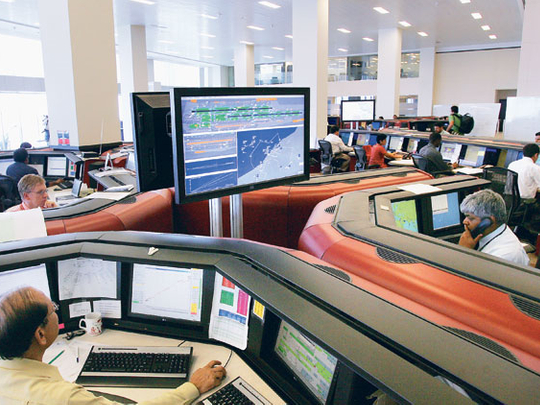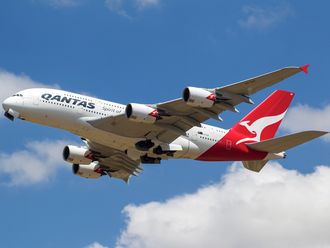
Dubai: It's around noon on April 21 and Gill Sparrow, Manager of Contingency Response Planning at Emirates airline, has a few minutes to spare - for the first time - in the past week.
"It's a reflection of reality," she said, giving XPRESS an exclusive low-down on how the Emirates' operational hub in the Network Control Centre (NCC) and its crisis rooms at its headquarters overlooking Terminal 3 handled the ash attack following the volcanic eruption in Iceland last Wednesday.
"When you are planning for a crisis, you do it in peace time," she said, adding that it's another matter to see it actually operating in a disruption mode.
The disruption mode has been scaled down to recovery mode by now, but as Sparrow pointed out, it is the first time that Emirates has handled a major operational disruption, with special teams of over 120 members from the airline pressed into contingency response.
A disruption, as the airline's operational procedures go, is a stage below the crisis mode which is activated during an accident or a bomb threat.
"It's the largest disruption we've handled," said Sparrow, adding that foggy weather in the past had necessitated disruption management but not at the magnitude of the current level.
Plan of action
She said it was at 5am on April 15 that the NCC first got wind of the implications of the ash cloud even as the weather charts captured the route of the travelling ash. The shift in charge immediately put out a message to the managers and by 6am, a meeting had been convened and the course of action chalked out.
With the disruption management system in place, all the three crisis rooms adjacent to the NCC were activated, the teams inside working round the clock ever since.
At peak time during the initial period of the disruption, 30 Emirates staff were on duty at the Incident Command Centre (ICC) and Support Centre while 40 others were at the Emergency Call Centre to make pro-active call-outs, said Sparrow.
In addition, 50 members of a special assistance team were outside catering to hotel bookings and information needs of passengers and family members, she said.
The numbers apart, the actual challenge lay in coping with the fluid situation in European airspace and making sense of the Air Traffic Control (ATC) advice from various countries. Sparrow said besides regular updates and bulletins from these quarters, hundreds of calls had to be physically made to the ATCs in UK, France, Italy, Germany Switzerland and other countries to get confirmation about the available updates.
Sparrow said there were initial difficulties in rebooking passengers on disrupted flights. "We did not know what flight to book them on as the situation kept changing," she added.
She said dealing with stranded passengers in Dubai and elsewhere would have been daunting had it not been for the airline leadership's commitment to take care of their accommodation and other needs.
While contacting people who were directly booked with Emirates was not a problem, the airline had to rely on travel agents worldwide to inform other passengers, she said.
Homeward bound
Sparrow said the number of people at the ICC had come down to 10 by the morning of April 21. With flights to the UK and other destinations becoming operational, the number of stranded passengers in Dubai had been reduced to a few hundred, she said, adding that there would be few or none left at local hotels by the end of the day.
Meanwhile, Lorne Riley, Head of Corporate Communications at Dubai Airports, said the Dubai airport, which had also activated its contingency plans, had waived parking charges and issued 96-hour visas, free of charge, to help ease matters during the disruption.
He said the airport was in constant touch with the airlines, police, immigration and other authorities to be able to handle huge volumes of passengers reporting to the airport as and when the airspace reopened.









